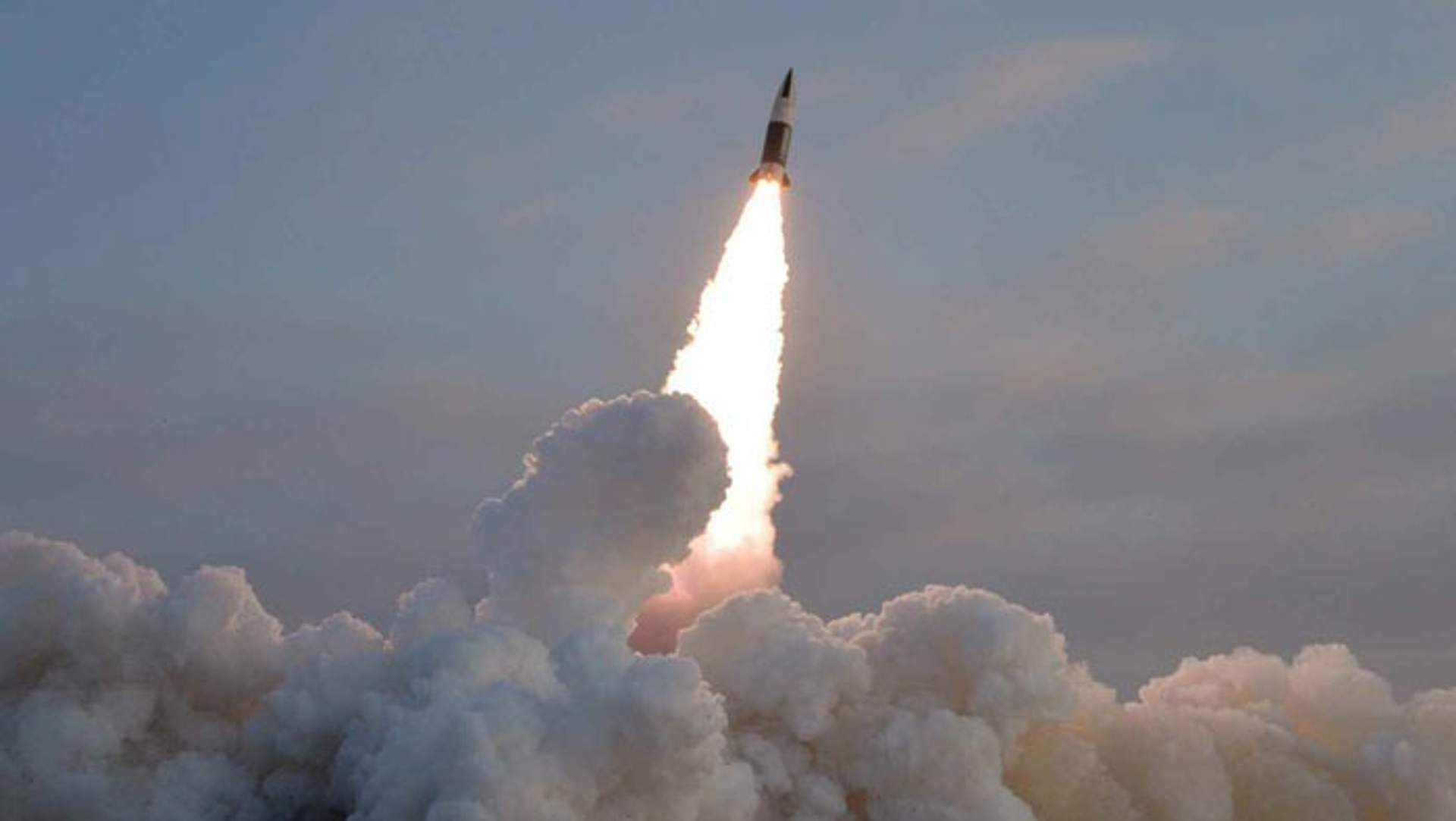https://sputnikglobe.com/20220226/north-korea-fires-unidentified-projectile-south-korean-media-report-1093406218.html
North Korea Fires Unidentified Projectile, South Korean Media Report
North Korea Fires Unidentified Projectile, South Korean Media Report
Sputnik International
North Korea confirmed last month that it had tested the Hwasong-12 intermediate range ballistic missile (IRBM), which is the country's biggest missile test in... 26.02.2022, Sputnik International
2022-02-26T23:02+0000
2022-02-26T23:02+0000
2023-09-18T13:38+0000
asia
ballistic missile
south korea
north korea
https://cdn1.img.sputnikglobe.com/img/07e6/01/11/1092328447_0:0:700:395_1920x0_80_0_0_02c35d3e96b15452cddeaff1cfe4bcfb.png
North Korea launched early on Sunday an “unidentified projectile eastward” after a month of silence, Yonhap reported, citing the South Korean military.According to the publication, detailed characteristics such as flight range, altitude and speed are still being analyzed by the South Korean military, who allow for the possibility that it might be a “ballistic missile.”The projectile fell beyond Japan's Exclusive Economic Zone, according to Kyodo.If the information about the launch is confirmed, this will be Pyongyang's eighth missile test since the beginning of the year.On 31 January, North Korea confirmed that it had successfully tested the day before a medium-range ballistic missile that traveled about 800 kilometers at a maximum height of 2000 meters. The rocket, fired towards the Sea of Japan, was said to be 16 times faster than the speed of sound.On 5 and 11 January, North Korea tested missiles that Pyongyang claimed were hypersonic. On 14 January, two short-range ballistic missiles were launched from a rail-based missile system and three days later, North Korea tested two short-range tactical guided missiles. Cruise missiles and a tactical surface-to-surface guided missile were tested on 25 and 27 January respectively.
south korea
north korea
Sputnik International
feedback@sputniknews.com
+74956456601
MIA „Rossiya Segodnya“
2022
News
en_EN
Sputnik International
feedback@sputniknews.com
+74956456601
MIA „Rossiya Segodnya“
Sputnik International
feedback@sputniknews.com
+74956456601
MIA „Rossiya Segodnya“
north korean ballistic missile tests, south korea, hwasong-12, intermediate range ballistic missile
north korean ballistic missile tests, south korea, hwasong-12, intermediate range ballistic missile
North Korea Fires Unidentified Projectile, South Korean Media Report
23:02 GMT 26.02.2022 (Updated: 13:38 GMT 18.09.2023) North Korea confirmed last month that it had tested the Hwasong-12 intermediate range ballistic missile (IRBM), which is the country's biggest missile test in five years and seventh launch since early 2022.
North Korea launched early on Sunday an “unidentified projectile eastward” after a month of silence, Yonhap reported, citing the
South Korean military.
According to the publication, detailed characteristics such as flight range, altitude and speed are still being analyzed by the South Korean military, who allow for the possibility that it might be a “ballistic missile.”
The projectile fell beyond Japan's Exclusive Economic Zone, according to Kyodo.
If the information about the launch is confirmed, this will be Pyongyang's eighth missile test since the beginning of the year.
On 31 January,
North Korea confirmed that it had successfully tested the day before a medium-range ballistic missile that traveled about 800 kilometers at a maximum height of 2000 meters. The rocket, fired towards the Sea of Japan, was said to be 16 times faster than the speed of sound.
On 5 and 11 January, North Korea tested missiles that Pyongyang claimed were hypersonic. On 14 January, two short-range ballistic missiles were launched from a rail-based missile system and three days later, North Korea tested two short-range tactical guided missiles. Cruise missiles and a tactical surface-to-surface guided missile were tested on 25 and 27 January respectively.


